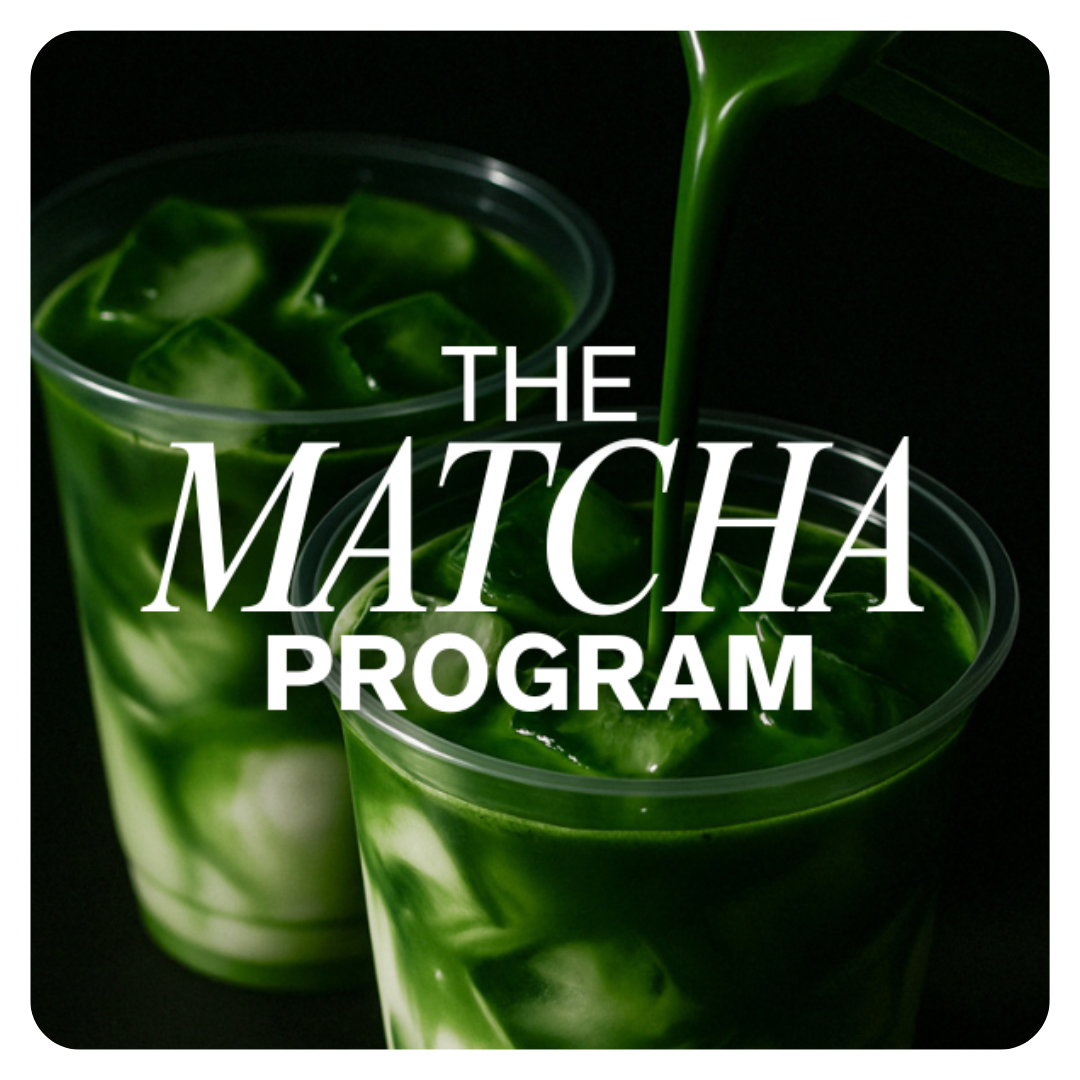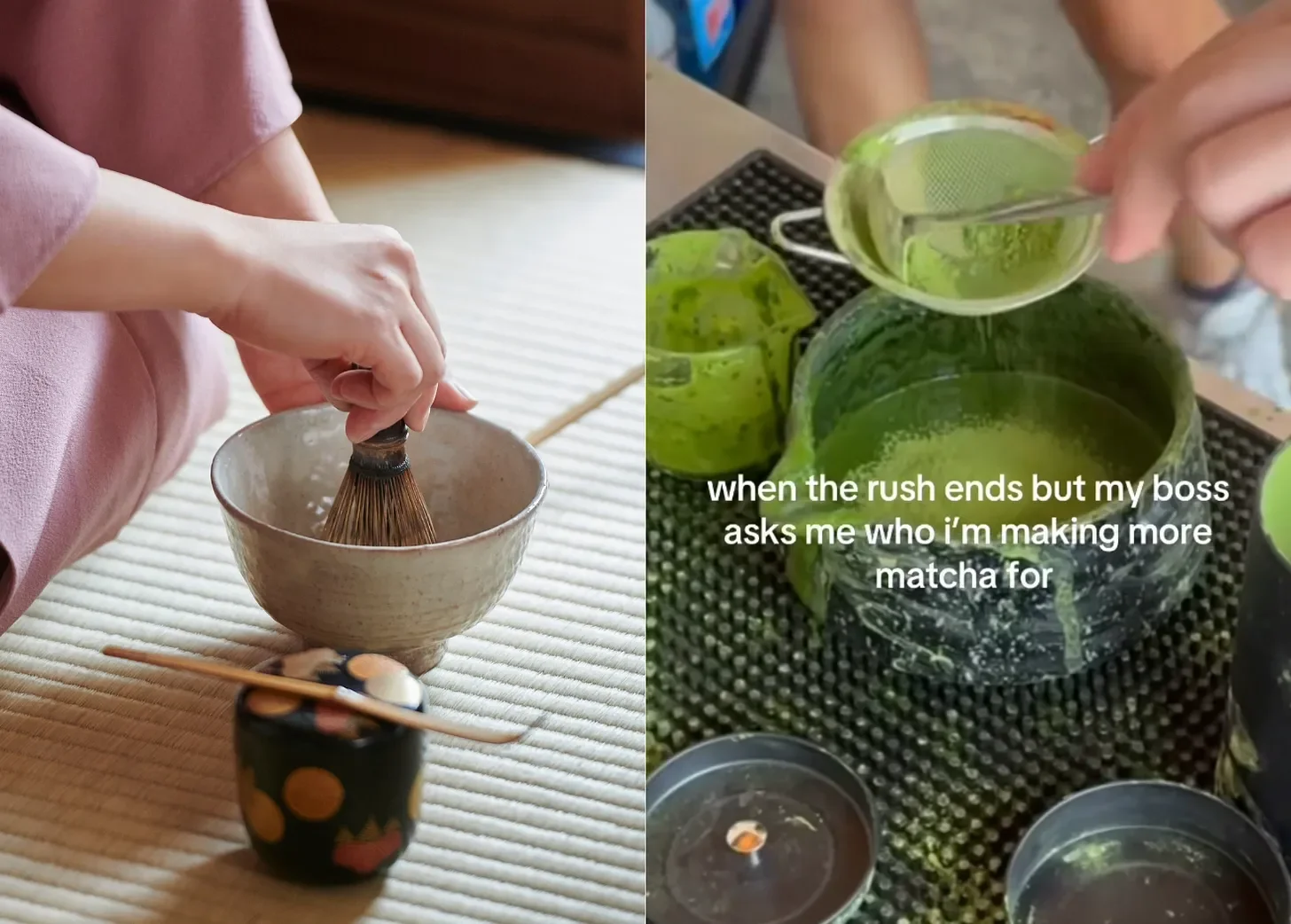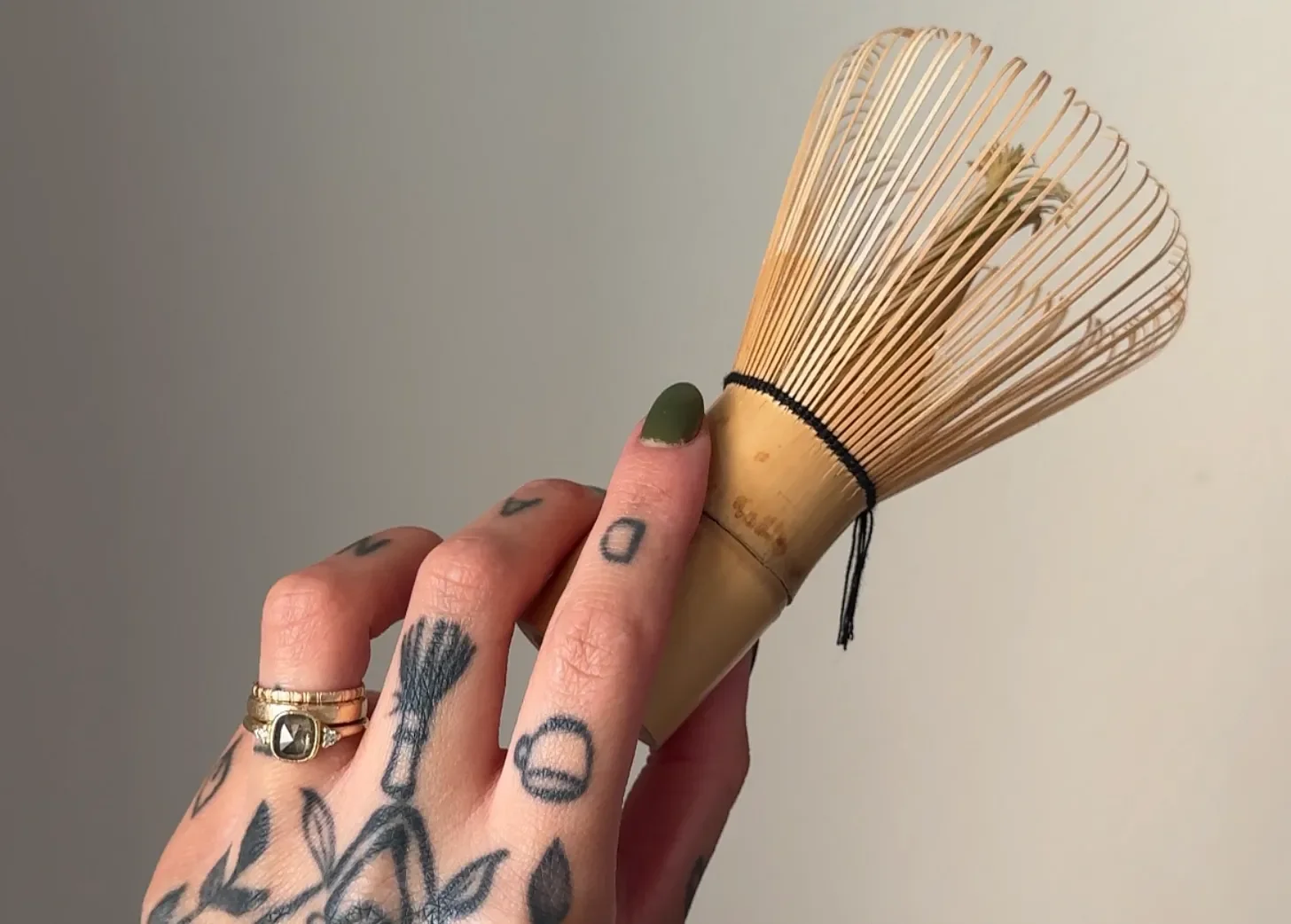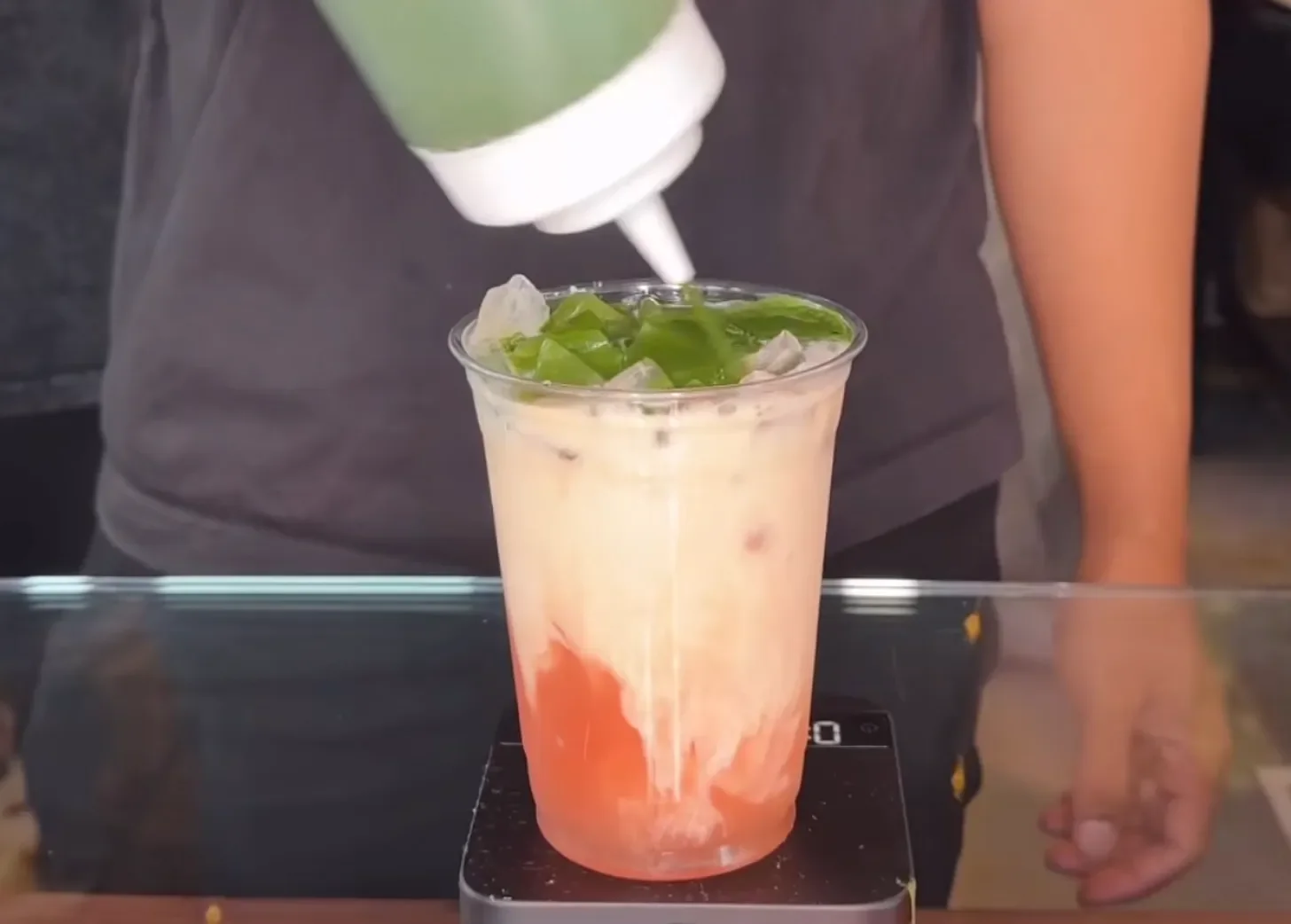Hand-whisk vs. Batch: The Matcha Debate
When we first shared a Reel on Instagram about hand-whisking vs batching matcha, the reactions were spirited.
Some people agreed: context matters. A bamboo whisk isn’t always the right fit for a high-volume cafe, and batching is often better suited for this reality. Others accused us of “Americanizing” matcha or dishonoring its culture by even suggesting batching—a method many cafes globally, including in Japan, already use.
So the conversation isn’t about whether batching belongs in the matcha world. It’s about how to do it well.
Both camps are valid in their own way, and that is exactly why we need to talk about this.
This isn’t about redefining tea ceremony or traditional preparation. Those contexts are sacred in their own right. What we are focused on here is the reality of high-volume cafes, where matcha must coexist with coffee programs and operational demands.
This discourse matters. Whether you receive direct customer feedback (“Why don’t you whisk to order?”) or indirect feedback through perception (“Batched must mean low quality”), your matcha program is signaling something. Every decision—from the tools you use to the systems you implement—communicates intention, quality, and care (or the lack thereof).
The key is not getting trapped in misconceptions, but understanding the trade-offs of each method and using that knowledge to empower your team. When baristas are confident in their preparation method, they can field questions with clarity instead of defensiveness, turning potential objections into educational moments.
Why Talk About Preparation Styles?
One of the most common questions we get from cafe operators is:
👉 “What’s the best way to prepare matcha in a busy cafe?”
The truth: there isn’t a one-size-fits-all answer.
Most specialty cafes started coffee-first. As demand for matcha grew, they adapted—a smart business move. But adapting requires choosing a preparation method that balances speed, consistency, and customer perception.
That is where the tension comes in. Should you preserve the ritual of hand-whisking? Or lean into batching for efficiency? Let’s explore both.
Can Tea Ceremony Principles Be Honored in a Cafe Setting?
Tea ceremony is rooted in presence, mindfulness, and slowing down. A high-volume cafe, by contrast, is built on efficiency, speed, and throughput. These two contexts almost directly oppose each other.
👉 So can matcha culture (or elements of tea ceremony) truly be honored in a setting that pushes against its very foundation?
We write for high-volume cafes managing both coffee and matcha programs. While hand-whisking may be manageable (and even preferred) for teahouses or matcha bar concepts, the realities of a busy cafe are different.
We pose these extremes because of the strong beliefs customers often bring with them. Many believe that unless matcha is hand-whisked to order, it isn’t authentic. But here’s the reality:
Hand-whisking to order, done properly, is not just a quick swirl of the chasen. It requires:
Sifting to prevent clumping
Careful attention to water temperature and ratios
Multi-step whisking technique for consistency and crema
Now layer this into peak service. For some cafes, matcha tickets don’t just match coffee orders, they surpass them. Expecting a barista to execute this ritual across hundreds of drinks a day is unrealistic. It’s labor-intensive, operationally unsustainable, and often leads to shortcuts that compromise both quality and customer wait times.
Even tea practitioners and matcha industry professionals—people who dedicate years to mastering the art of whisking—agree the chasen is not the right tool for a busy cafe. A single tea ceremony can last hours, where every whisk, pause, and gesture has meaning. That level of mastery cannot be replicated in the middle of a morning rush.
And here’s the kicker: we’ve had hand-whisked matcha drinks that were dull and bitter because the powder had oxidized from poor storage. The preparation looked traditional, but the outcome wasn’t. Meanwhile, we’ve had vibrant, delicious batched lattes from cafes that invested in airtight storage, refrigeration, and disciplined systems.
This highlights a broader opportunity for both cafe and consumer education. Quality isn’t about optics. It’s about care, systems, and the intentional design of a broader matcha program.
Method 1: Hand Whisking
What it is: Matcha prepared fresh for each order with a chasen, chawan, and water. Think of it as the pour-over of matcha: slower, mindful, ritualistic.
Pros
Preserves sensory ritual (customers perceive it as authentic)
Strong visual and storytelling opportunities
Drinks whisked to order for maximum freshness (when storage and technique are right)
Cons
Slows down service and creates bottlenecks
Technique-sensitive; consistency depends on training
Bamboo whisks are fragile, mold-prone, and not designed for foodservice sanitization
Extra maintenance required; cannot go in dishwashers or tolerate harsh detergents
Best suited for
Cafes with slow bar concepts or tea-centric menus
Traditional offerings like usucha (thin tea) or koicha (thick tea)
Storytelling moments where ritual adds value
💡 Note: For cafes committed to whisking, resin whisks are a more durable, foodservice-friendly option.
Method 2: Batching
Batched matcha in a popular high-volume cafe stored on a cafe countertop, exposed to both oxygen and light.
What it is: A larger quantity of matcha concentrate is prepped ahead or during service, then portioned into shots for drinks.
Pros
Speed and efficiency during rushes
Consistent portioning across baristas
Reduces customer wait times
Cons
Risk of oxidation if not stored properly
Requires airtight containers, refrigeration/ice baths, and batch discipline
Needs periodic shaking or swirling to reincorporate powder
Less ritual and sensory storytelling
Risk of negative customer perception (“low quality,” “tastes bad”)
Best suited for
Iced lattes and high-volume drink programs
Cafes juggling both coffee and matcha
Teams that prioritize speed and consistency
Even within batching, there’s a spectrum. We’ve seen two hot matcha lattes, both batched, with completely different outcomes. Both cafes sourced from the same high-end vendor, but factors like storage, water temperature, batching ratios, and batch size discipline shaped the result.
Side-by-side comparison: Two hot matcha lattes prepared from batched matcha. Both cafes source from the same high-end matcha vendor and wholesale offering. Photos are unedited and were taken under the similar mixed lighting conditions (natural + fluorescent) inside the cafe.
Oxidation: The Real Quality Factor
Here’s the piece many overlook: matcha powder begins oxidizing the moment tencha leaves are milled.
Producers slow this process with cold storage, airtight pouches, and oxygen absorbers. Once matcha reaches your cafe, you become the steward of its freshness.
This is why batching can taste amazing if systems are in place, and why hand-whisking doesn’t guarantee quality.
👉 Quality isn’t determined by method. It’s shaped by storage, water temperature, barista technique, and vendor sourcing.
Freshly Ground Matcha: A New Frontier
A handful of cafes are now grinding tencha in-house with stone mills or experimenting with countertop grinders.
Quality and freshness in coffee and matcha are synonymous: grind closer to brew, get better flavor. But the vast majority of matcha today is pre-ground at origin. Only a few businesses have invested in milling systems that minimize oxidation at service, though innovations are shifting this.
Fresh-ground matcha may become the new standard, but until then, the markers of quality are your systems: airtight storage, disciplined batching, and barista training.
How Both Methods Can Coexist
The best programs we’ve seen don’t choose sides, they integrate both:
Batch iced drinks and high-volume service
Hand-whisk hot drinks or feature moments at a slow bar
Flex methods based on pace of service
Efficiency and authenticity don’t have to be at odds.
Final Thoughts
Matcha today feels like specialty coffee in its early years: full of tension, gatekeeping, and passionate opinions, but also brimming with possibility.
Our perspective: baristas and operators don’t need rigid rules. They need education, context, and tools to make informed choices.
The “best” preparation method is the one that aligns with a business’s unique goals and needs. Every method comes with trade-offs and considerations. The key is choosing the approach that supports both quality and operational reality.
🚨 Action step for cafe operators: Examine your current matcha program. Are there opportunities to evolve it? Remember, your matcha program is more than just drinks on a menu. It signals quality, intention, and brand differentiation in the same way a specialty coffee program does. A thoughtful program justifies premium pricing, especially if you’ve invested in high-quality matcha.
Coming Next in This Series
Preparation & Operations: Hand-whisking tools, batching systems, and training baristas for consistency
Sourcing & Innovation: How to source quality matcha during shortages, the rise of freshly ground matcha
Menu & Business Models: Matcha menu design, sustainable pop-up models, building margins without sacrificing quality
Marketing & Growth: Practical marketing tips, building in-house capabilities, and negotiating with vendors and creators
👉 So tell us: What challenges have you faced balancing matcha quality with efficiency?






